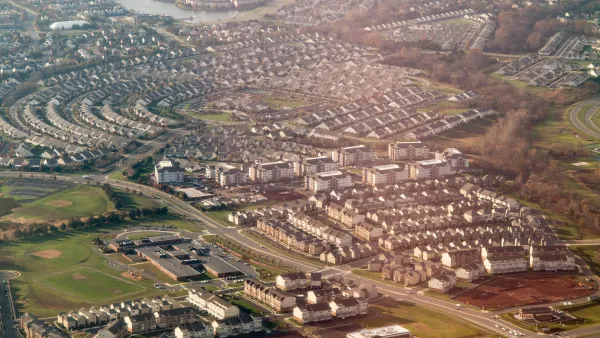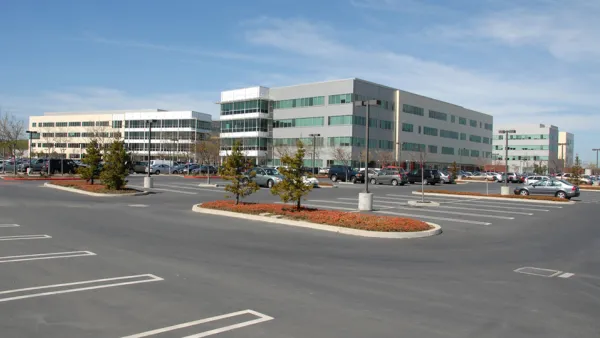Most attempts to regulate suburban development have focused on containing the growth of suburban housing. But such regulation, by restricting the supply of buildable land, risks incresing housing prices. And from a more libertarian perspective, an individual's interest in choosing to "drive to qualify" may seem quite appealing. Attempts to regulate commercial suburban development do not involve the same sentimental considerations as limits on residential development, but do risk increasing prices for commercial land, thus increasing prices for everything else.
Most attempts to regulate suburban development have focused on containing the growth of suburban housing. But such regulation, by restricting the supply of buildable land, risks incresing housing prices. And from a more libertarian perspective, an individual's interest in choosing to "drive to qualify" may seem quite appealing. Attempts to regulate commercial suburban development do not involve the same sentimental considerations as limits on residential development, but do risk increasing prices for commercial land, thus increasing prices for everything else.
But these considerations do not justify the form of suburban office parks. I can think of no reason why an office building (other than, perhaps, one where the Ebola virus is routinely handled) should be behind a 500-foot driveway with no sidewalks. The arguments for allowing offices to locate in suburbia do not justify the office park form, because 500-foot driveways do not reduce rents in any obvious respect.
Moreover, the suburban office park in its current form creates harmful externalities, by forcing people to drive to reach them even if they live nearby (thus increasing pollution and traffic congestion).
It logically follows that office buildings should be fair game for public regulation, in all but the most libertarian jurisdictions. Quite simply, any building in an area zoned for offices should be required to be within five or ten feet of a functional sidewalk, so that a pedestrian or transit user can reach the office without endangering life or limb.
In addition, any collection of office buildings should be on grid streets rather than cul-de-sacs. The traditional justification for cul-de-sacs is to protect families from cut-through traffic. But this justification does not apply to an office building, since office buildings by definition create traffic to a much greater extent than do single-family homes.

Analysis: Cybertruck Fatality Rate Far Exceeds That of Ford Pinto
The Tesla Cybertruck was recalled seven times last year.

National Parks Layoffs Will Cause Communities to Lose Billions
Thousands of essential park workers were laid off this week, just before the busy spring break season.

Retro-silient?: America’s First “Eco-burb,” The Woodlands Turns 50
A master-planned community north of Houston offers lessons on green infrastructure and resilient design, but falls short of its founder’s lofty affordability and walkability goals.

Test News Post 1
This is a summary

Analysis: Cybertruck Fatality Rate Far Exceeds That of Ford Pinto
The Tesla Cybertruck was recalled seven times last year.

Test News Headline 46
Test for the image on the front page.
Urban Design for Planners 1: Software Tools
This six-course series explores essential urban design concepts using open source software and equips planners with the tools they need to participate fully in the urban design process.
Planning for Universal Design
Learn the tools for implementing Universal Design in planning regulations.
EMC Planning Group, Inc.
Planetizen
Planetizen
Mpact (formerly Rail~Volution)
Great Falls Development Authority, Inc.
HUDs Office of Policy Development and Research
NYU Wagner Graduate School of Public Service





























